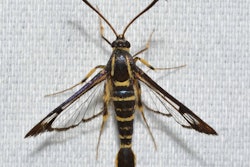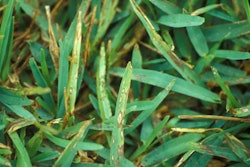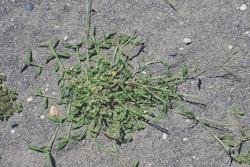The claim that combining diquat with glyphosate to kill weeds more quickly has been challenged in a research paper published in Weed Technology 22, July-September 2008. The hypothesis for the paper, “Interaction of Glyphosate and Diquat in Ready-To-Use Weed Control Products,” by Glenn Wehtje, James E. Altland and Charles H. Gilliam, is this: Even though diquat seems to boost the efficacy of glyphosate, it may actually be antagonistic to glypohsate activity.
The power of one
Glyphosate, known for its ability to kill a diverse range of weeds non-selectively, is a popular choice for weed control and is the active ingredient in many products. As a systemic herbicide, the appeal of glyphosate is its ability to kill not only plant tissues that come in direct contact with it, but also the roots of the plant, thereby resulting in long-term control. Used alone, glyphosate treatments are quite effective on weeds. But, according to Wehtje, et al., “An informal survey of these ready-to-use weed control products revealed that glyphosate is rarely marketed as a single component product and that diquat is a common additive.”
Why? Because “sales personnel claim that the small amount of diquat (typically 0.04 by weight relative to the glyphosate) ‘makes the glyphosate work faster.’ ” However, the researchers set out to prove that while the diquat does indeed give the perception of increased performance, the reality is that it actually prevents glyphosate from working the way it is intended to work.
By inhibiting the plant’s production of aromatic amino acids, glyphosate works over a period of days to injure and kill plants. It takes some time for the chemical to translocate within the plant, but when it does, the results are long-term suppression of growth.
“This delay is actually beneficial because it allows for extensive translocation and, ultimately, more complete control,” according to Wehtje. “However, this delay in symptom occurrence does not give the consumer the immediate visual satisfaction that the product is working.”
Diquat, on the other hand, offers almost immediate (comparatively) visual results because it “diverts energy from photosynthesis, producing peroxide radicals, which result in rapid cell collapse and onset of phytotoxic symptoms.” These results increase consumer satisfaction because there is visual proof the product is working.
“Symptoms such as rapid wilting and desiccation can occur within several hours in full sunlight,” Wehtje said.
On trial
To test their hypothesis, Wehtje, Altland and Gilliam, set up experiments at Auburn University using longstalked phyllanthus. These plants were treated using six glyphosate rates and four diquat levels. The researchers collected data and evaluated plant injury at four days after treatment and looked for long-term control of the plant at two weeks after treatment. After the initial two weeks, they clipped the plants and waited to determine regrowth after another two weeks.
To study the influence of diquat on the translocation of glyphosate, the researchers used two solutions on longstalked phyllanthus: one with diquat (at the 0.04 rate) and one without. They harvested the treated plants for testing after 36 hours.
Getting results
When the plants were evaluated to determine the amount of chemical they retained and how the chemicals were distributed in the plant, the numbers indicated a clear result. When glyphosate was applied alone, a large portion (63.7 percent) was recovered within the tissues of the treated plant. But more importantly, 39.9 percent of the applied glyphosate was also found in other parts of the plant, proving that translocation had taken place away from the treated leaflet. However, when the glyphosate was combined with diquat, 78.5 percent of the applied chemical was recovered in the treated area of the plant but only 6.1 percent was recovered away from the point of entry. The researchers found the net result to be a substantial reduction in the translocation away from the point of entry when diquat was used in combination with glyphosate.
“Diquat can be deemed a synergist to glyphosate with respect to the production of rapid visual injury. However, diquat is an antagonist with respect to long-term control and the prevention of regrowth. This antagonism can be largely attributed to reduced tranlocation,” Wehtje says. “The theory that diquat makes glyphosate work faster is incorrect. Rapid onset of diquat-based injury is independent and inhibits the activity of glyhosate. If diquat is included, higher glyphosate rates must be used to avoid any loss of long-term control. Although higher rates are likely easily achieved in these ready-to-use products, it does represent excessive herbicide usage for a transitory benefit.”











